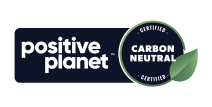Any well-designed website will discuss a core topic – or set of topics – alongside supporting pages which help to boost their authority.
When you speak with a content strategist about site architecture, it’s likely they will begin talking about pillar pages and topic clusters.
These are core elements to build out for many reasons. They improve site navigation for both crawlers and users, send authority signals to search engines and ultimately assist with conversion rates.
If you want to read about topic clusters, we have written a guide on how to build them out. Here, though, we’ll dig into what a pillar page is and how to create one which is optimised for SEO success.
What is a pillar page?
A pillar page is an authoritative content hub on your site which serves to provide users with a comprehensive overview of a topic, link out to supporting pages (your topic cluster) and drive conversions.
They are key traffic and conversion drivers, so they should be developed with time and care. Here at Skittle Digital, we have developed a 9-step process to building out the ultimate pillar page.
1. Establish your core topics
It’s likely you will already know what your core topics are. For example, if you work for a major bank your topics will largely be the products you offer – current accounts, mortgages, personal loans and so on.
However, if your core topics are a little fuzzy then these need to be finalised before you can move forwards. These topics should be general enough that they can have sub-topics underneath them, but not so vague that they cannot be covered in a single in-depth overview.
2. Sketch out your pillars and clusters
To ensure you have good site architecture, it’s vital to map out where your pillars and clusters will sit. For example, you may have a pillar page about credit cards on your site, so you need to sketch out which clusters will be supporting it.
Some of these pages will already exist, such as customer hubs, online payment pages or credit card-related Help & FAQ sections. However, it will also be smart to have a dedicated content resource with evergreen content on credit cards.
You can think of some initial topic ideas, but you will pick up your topic clusters once your pillar page has been created.
3. Analyse your competitors
It’s always a good idea to check out what your competition is doing, as you can establish what features their pillar pages have in common as well as areas they may be weak in.
Make a note of the features that your audience will be expecting to see on your pillars – for example, other banking sites may have a dedicated section box for existing customers to log into their online portals.
You can also map out the unique features your pillar will have that will set it apart from the crowd. Perhaps your products can be promoted in a different way, or you could include an FAQ section at the bottom of the page to bring in more long-tail keyword traffic.
4. Perform keyword research
Now is the time to perform keyword research. As pillars are primarily focused on conversion, it’s wise to focus on those keywords which have commercial and transactional intent. In other words, these pages are focused on encouraging new users to make a purchase and existing customers to engage with their services.
You will likely already know the types of searches your customers are making – you can pick up this information using Google Search Console. Alternatively, make a list of topics that your pillar will be discussing and plug these into your keyword research tool.
When you build out your keyword research data, ensure you have separate columns on your spreadsheet for the keyword itself, the search volume and the keyword difficulty. These metrics will help you to identify total search volume and average keyword difficulty per cluster.
5. Cluster your keywords
Once you have your keyword research, you can group them into clusters. Keyword clusters are effectively groups of keywords which are similar or related. For example, you may have a cluster around the topic ‘what is a credit card’ which includes related keywords such as – what is credit card, what are credit cards, what’s a credit card, credit card explained.
As your clusters emerge, you will be able to start visualising the overall structure of this content page.
6. Develop your subheadings
When your clusters are ready, you can write out your subheadings. These should include the primary keyword in your cluster, and you can include the rest of the keywords underneath for reference when it’s time for you to start writing.
You may find at this stage that some of your subheadings need to be split out or merged. This is a natural part of the planning process.
7. Create EEAT content
This is easier said than done, which is why we have developed a comprehensive guide on how to produce content which aligns with EEAT guidelines. The general rule is that you need to write content that showcases your experience, expertise, authority and trustworthiness.
Key metrics to consider include:
- Writing original content
- Using language which references experience
- Weaving in proof of success
- Creating comprehensive coverage
- Having a good readability score
Internal linking is also important…
8. Apply internal linking
Internal linking strategy is vital for each pillar page, as these hubs will branch out to the secondary content sitting underneath it. As a result, consider where you will include links to these pages.
Some of your links will be included in section boxes for users to navigate to, while others will be included in the link text. Be sure to include relevant anchor text when placing links in your main content and put in regular time for a link audit once your pillar is live so that you can check for broken links, apply updated links to new pages and incorporate more accurate external links where appropriate.
9. Don’t forget imagery, design and UX
Once your content is written, it won’t be going onto a plain page on your site. During the pillar creation process, you should be in conversation with designers and UX researchers to ensure that the overall layout of the page is optimised.
This is where your competitor analysis will come in useful, as you can discuss the features which your audience is likely to expect. User testing may be appropriate to ascertain the layout which is most likely to encourage conversions and onward journeys.
A designer should be employed to create the overall layout of your page, perhaps by creating a wireframe or prototype which can be signed off by stakeholders.
Additional iconography or elements may need to be added by designers or developers, so build in time for these steps of the process with the help of a project manager.
Need help with your pillar pages?
We have experience in creating pillar page content and strategy for our clients, so get in touch to find out how we can help.
There are also a few slots left for next month for our Free Acquisitions Workshops to analyse your current position in the organic market and find out how you can improve your strategy.












